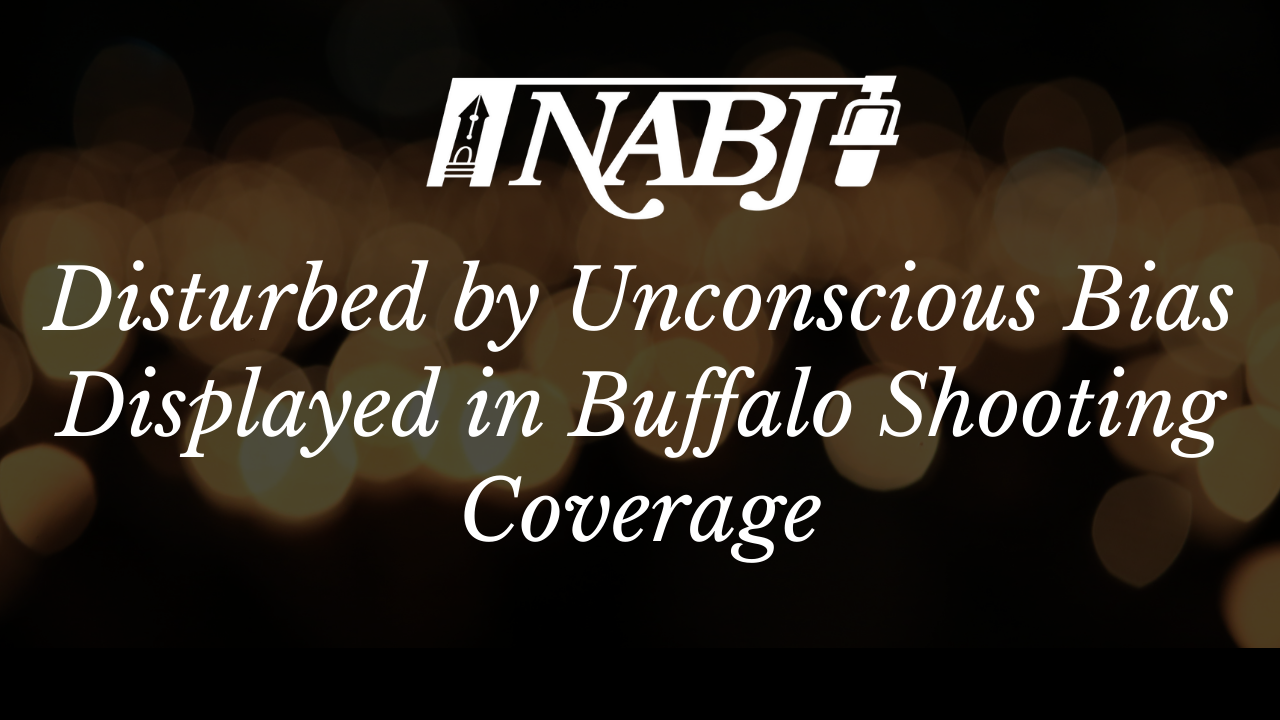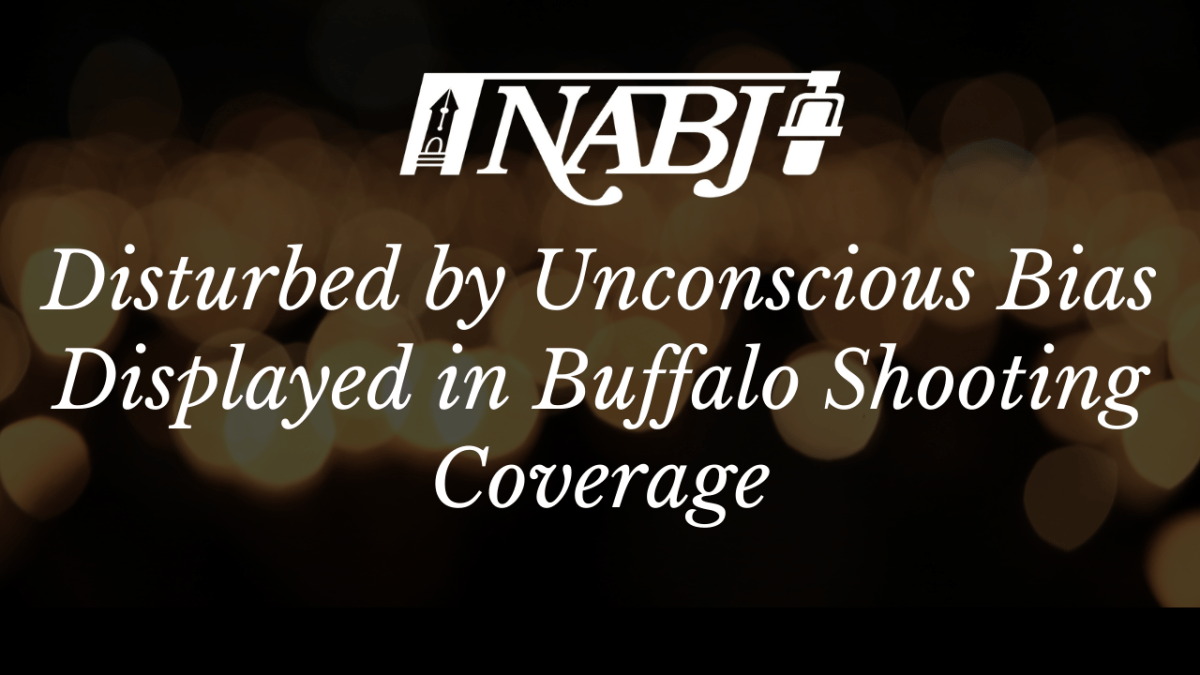NABJ Disturbed by Unconscious Bias Displayed in Buffalo Shooting Coverage

NABJ Joins Call for Pulitzers to Require News Orgs to Make Diversity Reporting Award Criteria
04/26/2022
AP Shares with NABJ Guidance Sent to Staff to Address Inequities in Age, Race Reporting
05/17/2022The National Association of Black Journalists (NABJ) denounces the senseless acts of gun violence and racially motivated terrorism that occurred in Buffalo, New York, on May 14.
We extend our prayers and thoughts to the families who have lost their loved ones, those who have suffered injuries, and the journalists covering this traumatic incident. We especially extend our arms to the Black journalists who once again must report on a story of horrific racial violence while grasping the fact that it could have easily been them or a loved one who lost their lives that day. We encourage news managers to ensure the proper resources are in place to help Black journalists cope with such trauma and encourage our members reporting this story to take care of their mental health. Speak up and seek help if the stories you are assigned to are affecting your well-being.
We take this time to implore our colleagues across the news industry to execute coverage of this story, and others like it, with great care and attention to detail. Inclusivity is not just about the faces selected to report on a story but how newsrooms provide the support and consideration necessary to ensure coverage serves the community and doesn’t alienate those affected.
The coverage we have seen around this story reveals there is still much work to be done in how newsrooms report on issues affecting the Black community and how unconscious bias still plays a role in the way suspects and victims are portrayed in the media. We expect every newsroom in America to have policies, procedures and people in place at all times to ensure coverage is fair, sensitive, thoughtful and accurate.
For example, readers of the Associated Press recently pointed out on social media how the news organization previously referred to gun violence victim Michael Brown as an “18-year-old Black man,” but Payton Gendron, the gunman in the Buffalo shooting, was initially described as an 18-year-old “white teenager.” This type of reporting helps to glorify stereotypes of Black young men and desensitizes their humanity and youth. All too often, white suspects are treated much more carefully in the media than Black victims. This must end now. We ask the Associated Press and others to take time to explore whether their coverage helps to portray Black victims as a threat while portraying white suspects as unthreatening.
NABJ is available as a resource to help newsrooms struggling to find the balance in how to make diversity, equity and inclusion more than a program and instead part of day-to-day operations.
We encourage our members to take advantage of our upcoming webinars and training on mental health awareness and invite news organizations to get more involved in activities like our upcoming Black Male Media Project. The Black Male Media Project hosts events nationwide every summer and focuses on providing insights and information about changing the narrative on how Black males and the Black community are portrayed in the media.
Media Contact: press@nabj.org.















